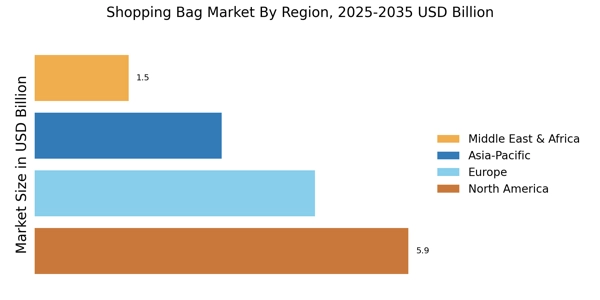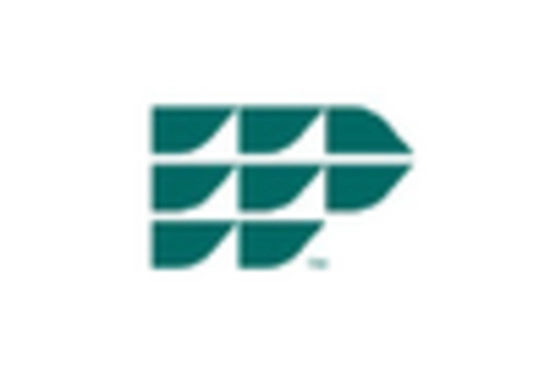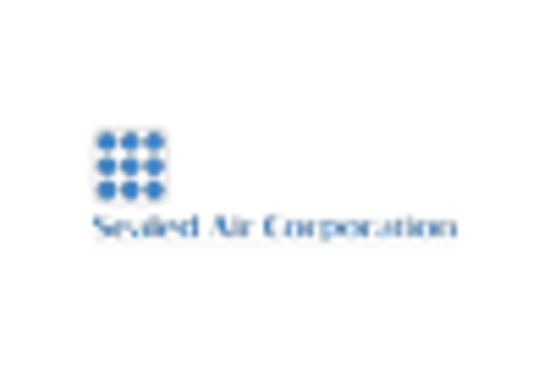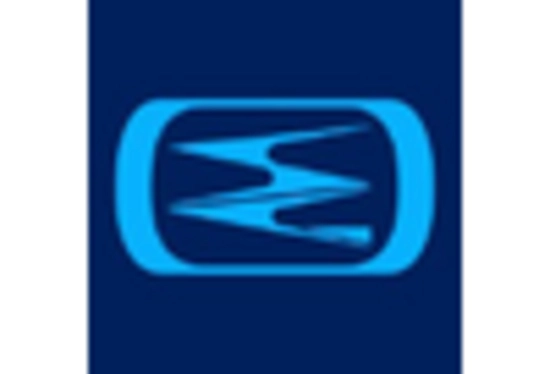E-commerce Growth
The rapid expansion of e-commerce is significantly influencing the Shopping Bag Market. As online shopping continues to rise, the demand for packaging solutions, including shopping bags, is also increasing. Data indicates that e-commerce sales have seen a consistent annual growth rate of around 15%, which directly impacts the shopping bag segment. Retailers are now focusing on providing durable and attractive shopping bags that enhance the unboxing experience for consumers. This trend not only caters to the needs of online shoppers but also encourages repeat purchases. Consequently, the Shopping Bag Market is adapting to these changes by innovating packaging solutions that meet the expectations of a digital-savvy consumer base.
Sustainability Initiatives
The increasing emphasis on sustainability initiatives is a pivotal driver in the Shopping Bag Market. Consumers are becoming more environmentally conscious, leading to a surge in demand for eco-friendly shopping bags. This shift is reflected in the market, where the use of biodegradable and reusable materials is gaining traction. According to recent data, the market for sustainable shopping bags is projected to grow at a compound annual growth rate of approximately 5.5% over the next five years. Retailers are responding by adopting sustainable practices, which not only cater to consumer preferences but also enhance brand loyalty. As a result, the Shopping Bag Market is witnessing a transformation, with companies investing in innovative materials and designs that align with eco-friendly values.
Regulatory Support for Reusable Bags
Regulatory support for reusable bags is emerging as a crucial driver in the Shopping Bag Market. Governments worldwide are implementing policies that promote the use of reusable shopping bags while discouraging single-use plastics. For instance, several regions have introduced bans or taxes on plastic bags, which has led to a notable increase in the adoption of reusable alternatives. This regulatory landscape is expected to propel the market forward, as consumers are encouraged to switch to more sustainable options. The Shopping Bag Market is likely to benefit from these regulations, as they create a favorable environment for the growth of reusable bag manufacturers and retailers who prioritize sustainability.
Technological Advancements in Production
Technological advancements in production processes are driving innovation within the Shopping Bag Market. The integration of automation and smart manufacturing techniques is enhancing efficiency and reducing production costs. These advancements allow manufacturers to produce high-quality shopping bags at a faster rate, meeting the growing demand from retailers and consumers alike. Furthermore, technology enables the development of new materials that are both durable and environmentally friendly. As a result, the Shopping Bag Market is likely to see an influx of innovative products that leverage these technological improvements, ultimately benefiting both manufacturers and consumers.
Consumer Preferences for Design and Functionality
Consumer preferences for design and functionality are shaping the Shopping Bag Market in profound ways. Modern consumers are not only looking for practicality but also for aesthetic appeal in their shopping bags. This trend has led to an increase in demand for bags that are not only functional but also stylish. Market data suggests that bags with unique designs and features, such as foldability and multi-functionality, are becoming increasingly popular. Retailers are responding by offering a diverse range of shopping bags that cater to these evolving preferences. As a result, the Shopping Bag Market is witnessing a shift towards more innovative and visually appealing products that resonate with consumers.


















Leave a Comment